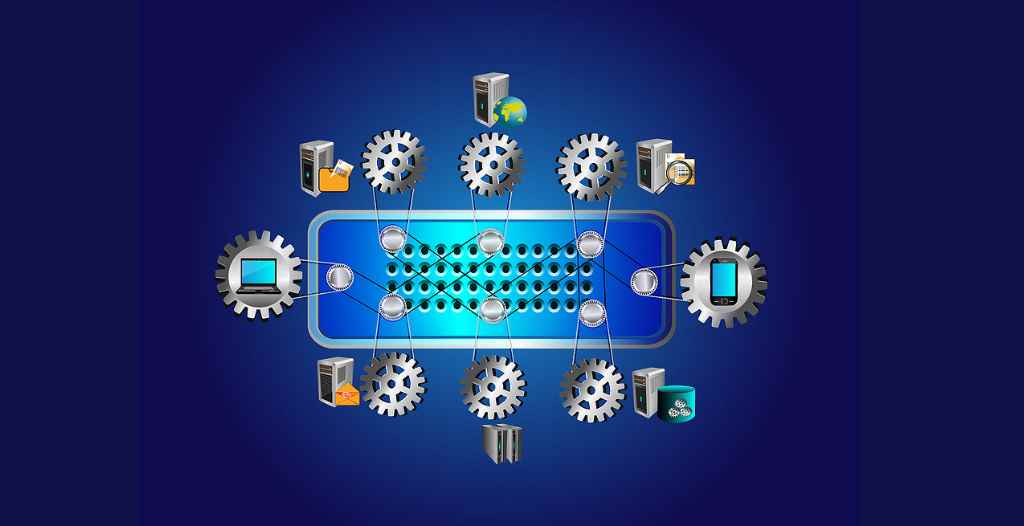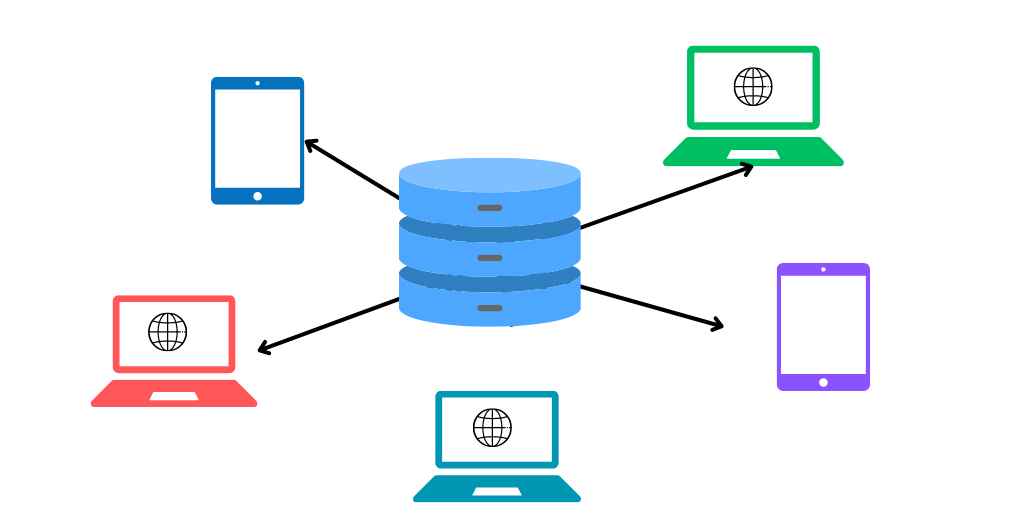Introduction to System Integration
The rise of the Internet and cloud computing have made it easy for businesses to connect and integrate computer systems and data exchange, changing how we live and do business.
Table of Contents
ToggleSystems integration provides a critical foundation for modern businesses and technology, combining various system components and data within an enterprise or across different industries. This ability to connect systems and applications enables all types of advanced software solutions, from extensive customer relationship management software (CRM), to enterprise resource planning (ERP) suites, enhancing efficiency, reducing operational costs, and enabling smoother business processes.
Understanding System Integration
Types of System Integration
The types of system integration vary based on the specific needs and scenarios, encompassing everything from data consolidation to complex inter-business processes.
At the start of a system integration project, the systems integrator will analyze feasibility by looking closely at the business environment and determine the types of integration needed and the best systems integration methods.
Key systems integration methods include:
Data Integration involves amalgamating data from diverse sources to form a cohesive, unified dataset available through a single user interface. It’s particularly critical for businesses that rely on comprehensive data analytics and reporting, enabling organizations to gain better insights, make informed decisions, and enhance overall operational efficiency.
Business-to-Business (B2B) Integration focuses on linking systems and processes between separate businesses. It’s fundamental for efficient supply chain management, fostering seamless partnerships, and enabling collaborative business processes. This integration type is critical to streamlining transactions and communications between companies, creating a common data format with smooth data flow between systems.
Legacy System Integration addresses the challenge of incorporating outdated, often inflexible systems into modern and more agile IT architectures. The goal is to retain the valuable aspects of these legacy systems while upgrading their capabilities and ensuring they work harmoniously with new technologies.
Electronic Data Interchange (EDI): EDI is centered on electronically exchanging business documents and data in standardized formats between trading partners using common data format integration. This streamlines transactions, reduces paperwork, and increases processing speed, playing a crucial role in automating business-to-business communications.
Components of System Integration

System integration connects disparate systems so business partners can achieve results more quickly and efficiently, utilizing several vital components that work together to create efficient, unified system integration solutions:
Integration Middleware acts as a bridge between disparate systems, streamlining communication and data exchange. Middleware can handle various protocols and formats, making its ability to translate a critical component of integration strategies that need to connect different technology stacks.
APIs (Application Programming Interfaces) enable software components to interact and transfer data between them, making software integration possible by defining the rules for communication between systems.
Data Transformation Tools perform data translation by converting, cleansing, and structuring data across diverse systems to make it compatible, ensuring consistency and accuracy in data exchange.
Interface Engines manage the complex interactions between integrated systems, receiving and routing data between them and playing a crucial role in ensuring that data is processed correctly.
Integration Platforms enable connectivity between applications, orchestrating and executing data exchange and other workflows between software solutions. They often include development, testing, and deployment tools, making the integration process more manageable and efficient.
System Integration Methods
System integration is a multi-faceted process involving various integration scenarios and methods to combine different systems and software applications physically or functionally.
A system integration project begins with the creation of a system integration design, using the most appropriate integration solution to achieve the business partner’s desired outcome and specific business integration requirements.
A final integration solution may include any of the following methods:
Point-to-Point Integration

Point-to-point integration is one of the simplest forms of systems integration. This method can be thought of as spaghetti integration, as each system is directly connected to every other system.
While point-to-point connections are easy to implement for a small number of systems, for a large systems integration project, spaghetti integration can become complex and unmanageable, as the nickname suggests, often leading to a tangled, overly complex integration design.
Enterprise Service Bus (ESB)

For a large system integration project, an Enterprise Service Bus (ESB) may provide a simpler design, serving as a middle layer that connects disparate systems and allows them to communicate without being directly connected.
It standardizes and facilitates communication protocols, enabling seamless data flow between systems, and is particularly useful in environments with many different applications and data formats.
The enterprise service bus is also an effective solution for business-to-business integration, adding the ability to securely connect core business functions across the cloud without directly connecting the businesses to one another.
Hub-and-Spoke Model
The hub-and-spoke model centralizes integration through a single point of contact (the hub) through which all systems (the spokes) communicate. This model simplifies the integration process by reducing the number of connections required and is more manageable than point-to-point integration for larger networks.

Star Integration
Star integration is similar to the hub-and-spoke model but focuses on integrating systems around a common point. It is often used in scenarios where a primary system is the central connector to various subsidiary systems.
The primary difference between hub and spoke and star integration methods is that hub and spoke integration uses a single connection point to connect disparate systems, while star integration connects all sub-systems to a primary system.
Enterprise Application Integration (EAI)
Enterprise application integration (EAI) or horizontal integration, involves integrating systems at the functional level, uniting business application data and workflows. It uses specialized sub-systems, responsible for communication between different sub-systems.
This method efficiently integrates systems that perform similar functions across different organizational units, for example, uniting workflows between human resources (HR), payroll, and IT ticketing systems to support business processes like onboarding.
Vertical Integration
While horizontal integration focuses on using similar data across different systems, vertical integration involves integrating different levels of data across systems. It starts at the bottom, integrating fundamental data first, and then gradually integrating more complex systems at the higher levels. This method is often faster but can be less flexible than horizontal integration.
A good example of vertical integration might be found in CRM systems, which could use basic customer information to create a user profile, then enhance that data with financial records and sales history. As data continues to be collected about a customer, the CRM system becomes more robust and intelligent.
Hybrid Integration Platform (HIP)
A hybrid integration platform integrates data, applications, and business partners across on-premises and cloud-based systems.
A systems integrator might choose to use a hybrid integration platform when a system implementation project has the need to connect both cloud and legacy systems.
The benefit of this approach is that it enables Software-as-a-Service (SaaS) solutions and other cloud-based applications to be integrated with outdated legacy systems that represent traditional on-premises solutions.
This system integration method provides a flexible solution to help organizations manage complex business logic across the business environment.
Legacy System Integration
Legacy system integration involves integrating older, often outdated legacy systems with newer technologies. This method is challenging but necessary for many organizations to preserve existing data and functionality residing in an organization’s internal systems while offering the opportunity to expand into a new integrated system using more updated infrastructure and applications.
Benefits of System Integration
System integration brings several advantages, enhancing overall business operations and technological capabilities:
Optimized Operational Efficiency
Systems integration streamlines workflows and provides a consolidated user interface, allowing for smoother and faster operations and reducing time spent on manual data entry and cross-checking between systems.
Enhanced Data Consistency and Quality
By centralizing data sources and translating them to a standard electronic format, system integration reduces the risk of data discrepancies, ensuring more reliable and consistent information across the organization.
Cost Reduction and ROI Improvement
Integrated systems can significantly lower operational costs by optimizing resource usage into one system, reducing the need for multiple disparate systems.
Scalability and Flexibility
An integrated system can easily adapt to organizational changes, allowing for scalability without the need for major overhauls.
Improved Decision Making
With more accurate and readily available data, management can make more informed decisions, enhancing strategic planning and forecasting.
Customer Satisfaction

Efficient business processes and a more unified approach to customer management improve customer service and satisfaction, as information is more readily available and processes are more streamlined.
Innovative Capability
System integrations facilitate the adoption of new technologies and methodologies, fostering a culture of innovation within the organization.
Challenges in System Integration
While offering significant benefits, system integration also comes with its own challenges ranging from technical to managerial. Understanding these challenges is crucial for successful integration projects.
Integrating Legacy Systems
Legacy systems, often critical to daily operations, pose significant challenges in system integration. Due to their age and outdated technology, these systems can be inflexible and incompatible with modern integration solutions. The key challenges include:
Compatibility Issues: Older systems might use outdated data formats or communication protocols, making it difficult to perform the common data format integration needed to streamline business processes.
Maintenance and Support: Older systems often require specialized knowledge, and finding support can be challenging as technology evolves.
Upgrade costs: Upgrading or replacing obsolete systems can be expensive and resource-intensive, often requiring significant investment.
Data Integration and Security Concerns

An experienced systems integrator will focus on data security as part of the integration landscape. Combining data from different sources into a unified view exposes security considerations that become critical to any systems integration initiative.
Data Silos: Organizations often have data silos where information is stored in isolated systems. Integrating these silos requires overcoming technical, cultural, and procedural barriers and requires the systems integrator to consider the confidentiality of data being exposed outside the silo.
Data Governance: Ensuring consistent data quality, accuracy, and compliance with regulatory standards is a systems integration challenge, requiring the system integrator to understand local data privacy regulations and ensure data flows can are documented for audit purposes.
Security Risks: Integration can expose sensitive data to new security vulnerabilities. Working with a system integrator with integration expertise becomes especially important to ensure proper security protocols are followed during the system integration process.
Cost Considerations
The cost to implement system integration can be a significant barrier, especially for smaller organizations. It includes the initial investment in technology and ongoing expenses such as maintenance, training, and upgrades.
Complexity and Scalability
System integration projects can become complex, especially when dealing with multiple systems with different architectures. Ensuring scalability to accommodate future growth without disrupting existing systems is a challenge.
Organizational Challenges
Successful system integration requires not just technological alignment but also organizational coordination. This includes managing change, aligning different departments, and ensuring staff training in new systems.
Performance Impacts
Integrating systems can sometimes impact performance. Ensuring the integrated system delivers the required performance without affecting existing operations is a significant challenge.
Vendor Dependence
Projects to implement system integration requires an expert system integrator with knowledge of networking, data structure and security that may not be present internally.
Organizations may become dependent on specific vendors for specialized integration software or platforms. This dependence can pose risks in terms of support, costs, and flexibility.
The easiest way to address this dependence is to identify staff who will be properly trained to act as the internal system integrator, working side by side with any vendor staff.
Compliance and Regulatory Issues
Organizations must ensure that their integrated systems comply with industry regulations and standards, which can be particularly challenging in sectors like healthcare and finance.
Best Practices for Integrating Systems
Implementing system integration effectively is a multifaceted process that requires careful planning, strategic decision-making, and a thorough understanding of the systems involved.
Thorough Planning: Start with a clear understanding of the objectives and scope of the integration project.
·Choose the Right Tools: Select appropriate middleware, APIs, and platforms based on the specific needs of the integration.
Focus on Scalability: Ensure the chosen solution can adapt to future growth and technological changes.
Prioritize Data Security: Implement robust security measures to protect data during and after integration.
Regular Testing: Continuously test the system throughout the integration process to identify and address issues early.
Effective Communication: Maintain clear communication among all stakeholders throughout the project.
Train Staff: Ensure team members are trained on the new system to maximize its effectiveness post-integration.
RFID Technology Drives Efficient Operation

Radio-frequency identification (RFID) technology provides advanced tracking and data collection capabilities and enables real-time monitoring of various parameters.
RFID technology has been successfully implemented for the following:
Retail Inventory Management: RFID is pivotal in inventory management and supply chain efficiency in retail and logistics. Major retail chains use RFID to track real-time inventory, reducing out-of-stock situations and improving customer experience.
Healthcare Equipment Tracking: Hospitals deploy RFID to track medical equipment, ensuring timely availability and maintenance of critical devices as well as ensuring proper temperature control for drugs and other supplies.
Supply Chain Management: In logistics, RFID tags are used for tracking goods throughout the supply chain, enhancing efficiency and transparency.
Aerospace Baggage Handling: Airlines use RFID for baggage tracking, significantly reducing mishandled luggage rates.
IoT Integration Transforms Business

The Internet of Things (IoT) represents a transformative force in system integration, reshaping how various industries operate and interact by connecting many devices and systems via the Internet. IoT enables a level of communication and automation previously unattainable.
This profound impact is reflected in numerous real-world applications:
Smart Home Automation: IoT devices in homes control lighting, heating, and security systems, offering convenience and energy efficiency.
Healthcare Monitoring: In healthcare, IoT is used for patient monitoring, using wearable devices to track health metrics and provide real-time data to healthcare providers.
Agricultural Efficiency: IoT technology helps monitor crop conditions and automate irrigation systems, increasing productivity.
Industrial IoT (IIoT): In manufacturing, IoT enables predictive maintenance, optimizes production processes, and enhances supply chain management.
Transportation Systems: IoT leads to more intelligent traffic management, enhanced safety features, and improved fleet management capabilities.
Enterprise Application Integration Success:
Three Case Studies
From pioneering efforts in satellite manufacturing to innovative infrastructure projects and advanced defense applications, these examples highlight how system integration is essential in driving technological advancements and operational efficiencies in different sectors.
Pixxel’s Pioneering Approach in Satellite System Integration:

Companies like Pixxel are leading the way in creating a system integration layer using satellite technology, with facilities designed to handle the intricate processes of spacecraft assembly, integration, and testing.
This level of integration is crucial for ensuring the reliability and functionality of satellites in space missions, but Pixxel also using its satellite technology to pull data from IoT devices all over the world, consolidating and analyzing data for real-time solutions to monitor pipelines and ensure proper field irrigation, for example.
Mumbai Trans Harbour Link Project
Infrastructure projects like the Mumbai Trans Harbour Link represent a significant system integration application in public works, incorporating automated toll collection and intelligent traffic management systems.
This project highlights how system integration can enhance efficiency and functionality in large-scale infrastructure developments.
India’s DRDO: Defense and Aerospace System Integration
India’s DRDO projects are at the forefront of system integration, including the development of light combat aircraft and their RADAR warning and anti-jamming systems illustrate the critical role of integrating various systems and technologies to enhance the capabilities of military and aerospace applications.
Trends in System and Enterprise Application Integration

As we look towards the future of system integration, we can expect significant advancements influenced by emerging technologies:
IoT-Driven Integration: The proliferation of IoT devices will lead to more interconnected systems, allowing for real-time data exchange and analysis, leading to smarter, context-aware environments, especially in smart cities and industrial IoT.
Cloud Computing: Enhanced cloud integration will facilitate more flexible and scalable solutions, enabling businesses to adapt quickly to changing needs and integrate systems across global networks.
Artificial Intelligence and Machine Learning: AI and ML will automate many integration processes, offering predictive analytics, intelligent decision-making, and adaptive systems that learn and evolve.
Conclusion
System integration is an essential aspect of digital transformation and business operations, enhancing efficiency and enabling advanced applications of technology, offering remarkable benefits in terms of operational efficiency, data management, and overall business growth.
System integration is not just a technical process; it’s a strategic approach that defines how businesses and technologies adapt and thrive in an increasingly complex digital world. Organizations can unlock new performance levels, customer satisfaction, and innovation by understanding and implementing effective system integration techniques.





